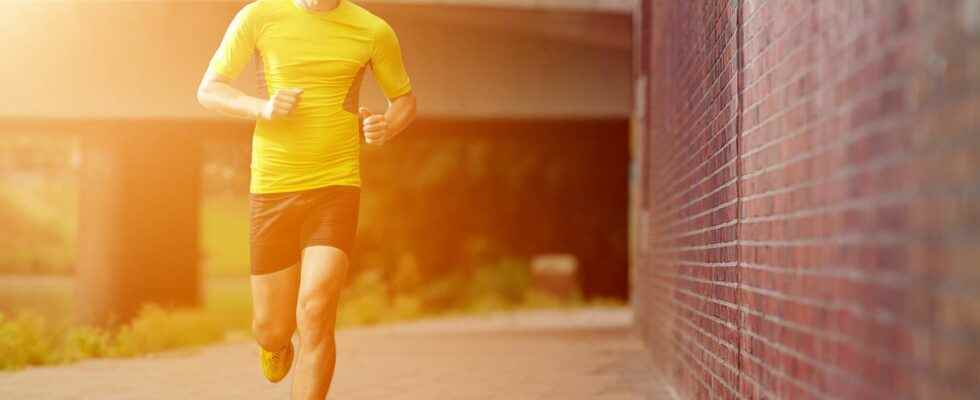The combined effect of physical activity and heat puts a strain on the body and can lead to heat stroke. Some tips for a safe practice.
You will also be interested
By strong heat, any intense effort is strongly discouraged. However, you can take advantage of sunny days to train with a few precautions.
Run early in the morning
Before 10 a.m., the temperatures are still cool and the courses in the shade. It is therefore the ideal time for a jogging. However, do not leave on an empty stomach: the lack of glycogen increases the risk of discomfort. Opt for a light lunch, based on fresh fruit, cereals and a dairy product. In the evening, preferably choose a route in the shade, but also avoid running along a wallwhich stores heat and blocks the wind.
Wear antiperspirant clothing
Several brands have developed technical clothing who evacuate the sweat while maintaining a feeling of freshness. FlashDry® textiles from The North Face thus incorporate microparticles that increase the absorption surface of the fibres. Uniqlo’s AIRism fabric is made of ultra-fine, light and absorbent fibres. The Coolmax® technology is based on synthetic fibers incorporating channels on the surface promoting the evacuation of the sweat. Otherwise, a sufficiently airy cotton T-shirt will do.
Protect yourself from the sun
A cap, sunglasses and sunscreen: the winning trio to avoid turning red when you return from your sports session. Above all, don’t go running in a simple swimsuit, but put on at least one T-shirt, preferably clear. Pay attention to the weather report misleading: the wind can give a false impression of freshness while the sun hit hard.
Hydrate regularly
Under the combined effect of heat and effort, the body sweat much more abundantly. During a game of tennis, you can lose up to five liters of water. However, 1% less water is a 10% reduction in your strength. It is essential to well hydrate before and after exercise, but also to drink regularly in small sips throughout the course, especially energy drinks which supply sugar to the muscles and sodium to compensate for salt losses. For this, equip yourself with a small bottle to hang on the belt for example. Conversely, refrain from drinkingalcohol 24 hours before an intense sporting event and avoid drinks with diuretic properties (coffee, tea, etc.) 12 hours before.
Refresh
Before leaving, pass your body and your head under a quick cold shower: wet hair will maintain a little freshness. Similarly, you can place your T-shirt or a headband on the fridge 20 minutes before the session. During the effort, do not hesitate to spray yourself with water regularly.
Run away from pollution
The practice of a sports activity can multiply by ten the volume ofair brewed by the lungs. However, heat promotes pollution peaks. By training during these episodes, the accumulation of toxic particles is increased accordingly. In addition, pollution lowers the threshold for triggering attacks in asthmatics. Avoid parks near main roads or narrow, poorly ventilated streets and prefer high places. Nevertheless, it is better not to choose a completely isolated place, a precaution in case of discomfort.
Recognize the red flags
When the internal temperature exceeds 40°C, it is the heatstrokea accident very serious which can lead to coma even death. Chills indicate a stoppage of blood circulation to the skin and herald a rapid rise in blood pressure. body temperature. It is then essential to stop immediately and get into the shade. Similarly, any sign of cramp, abnormal fatigue, dizziness, confusion, headache and stomach ache or nausea should lead to the effort being stopped. If you feel unwell, call the emergency services immediately.
Interested in what you just read?
Subscribe to the newsletter Health question of the week : our answer to a question you ask yourself (more or less secretly). All our newsletters
